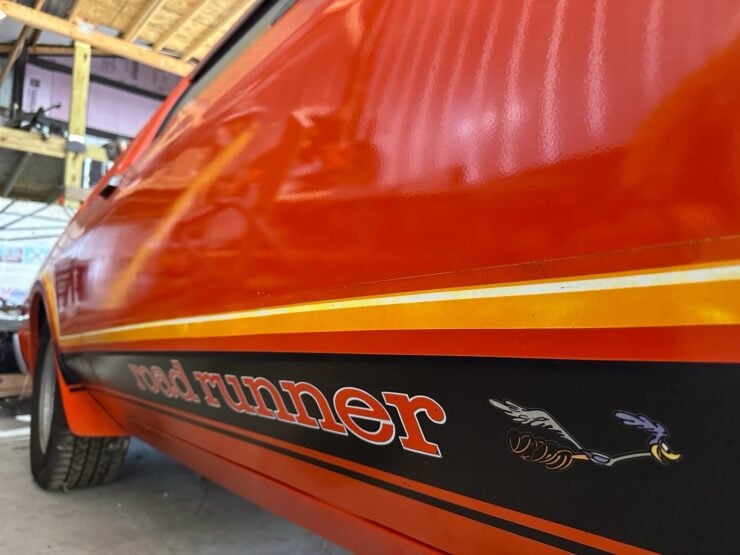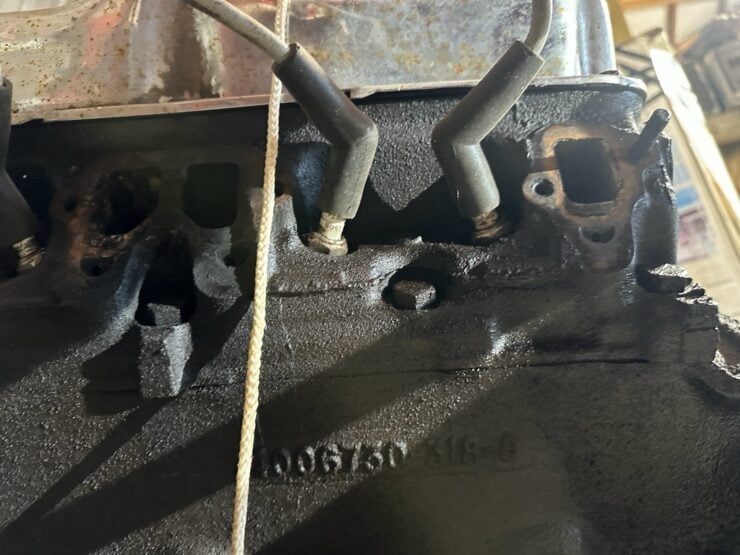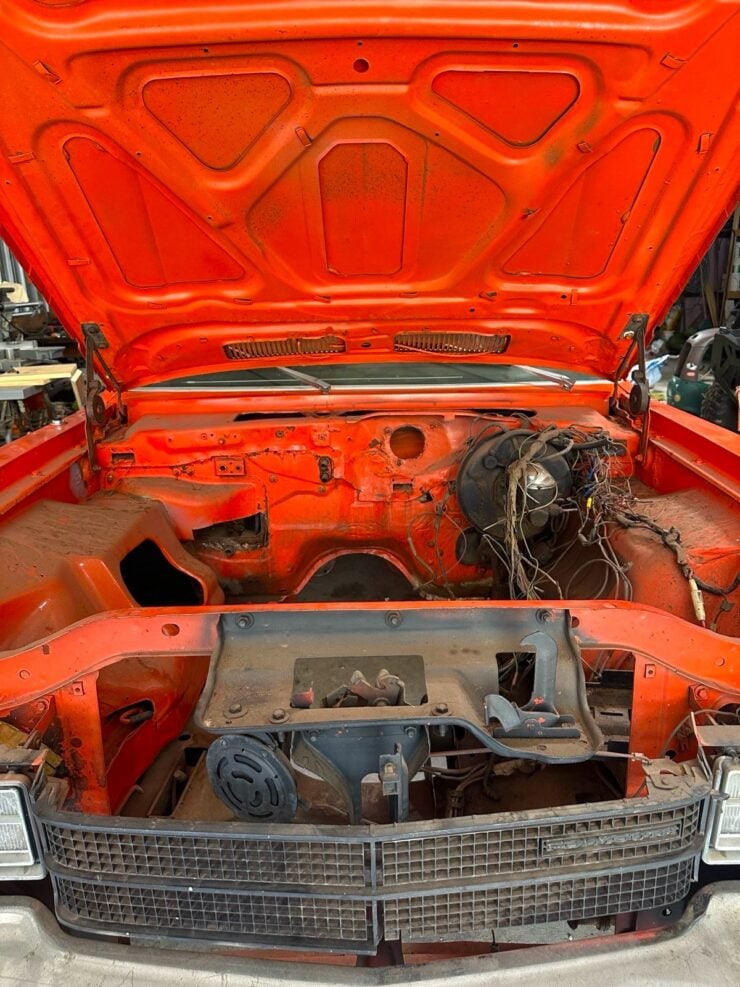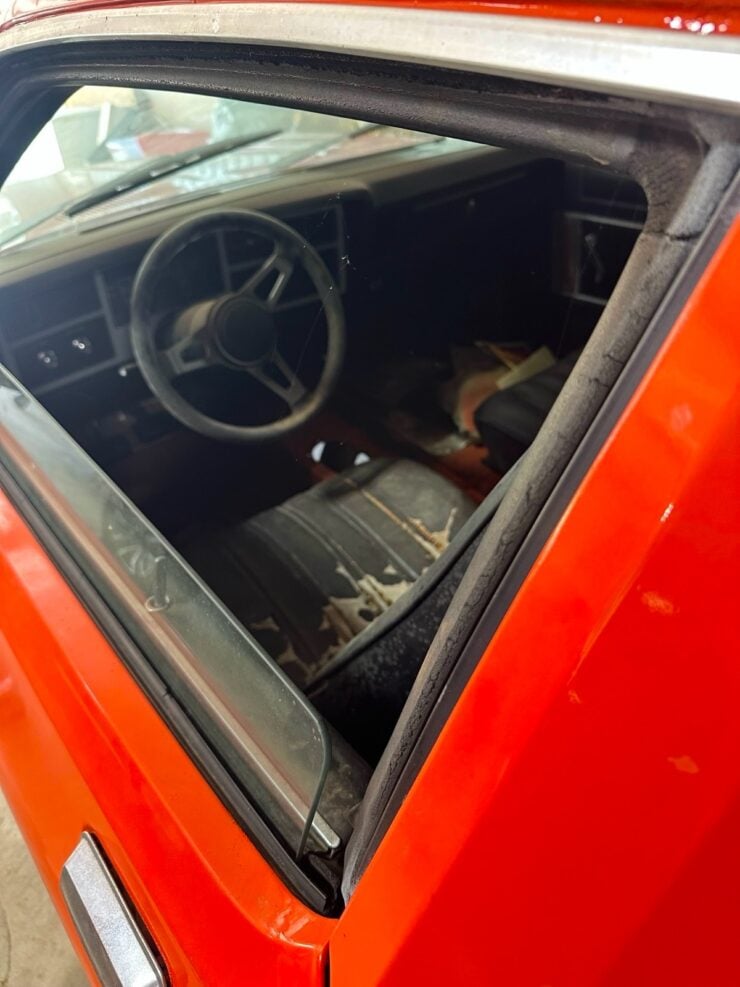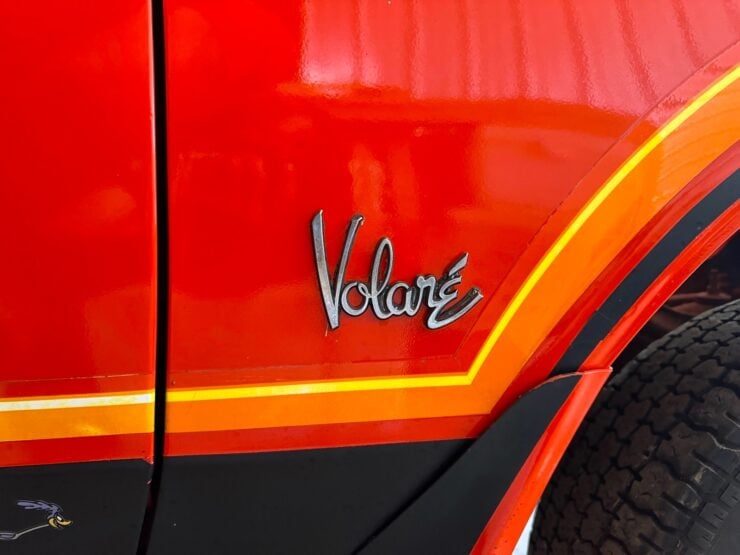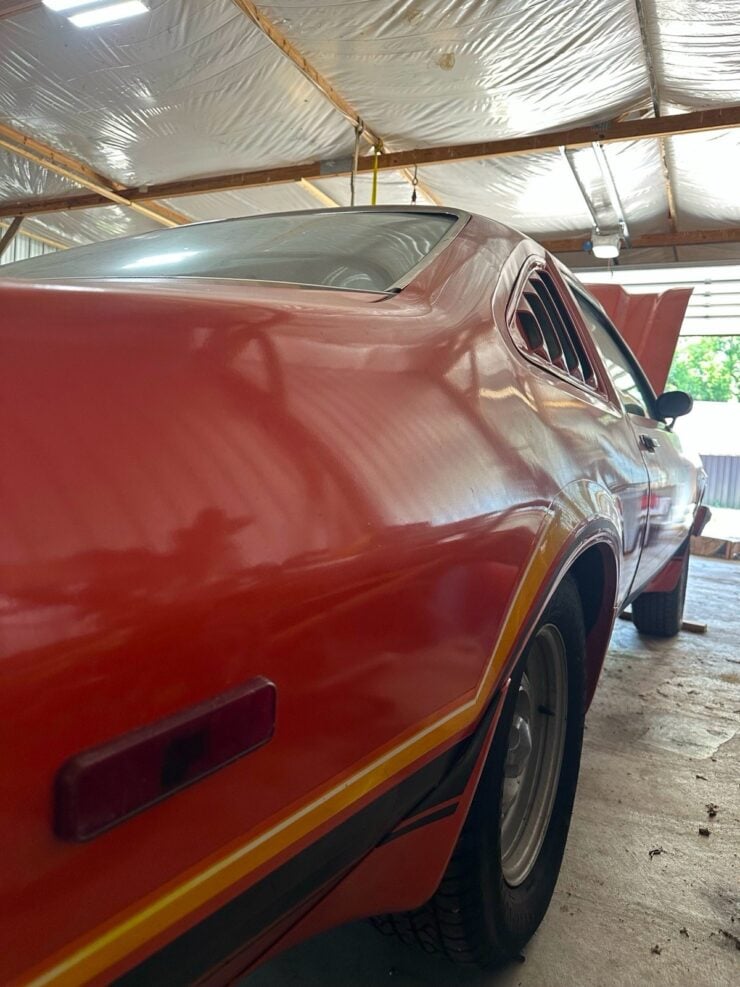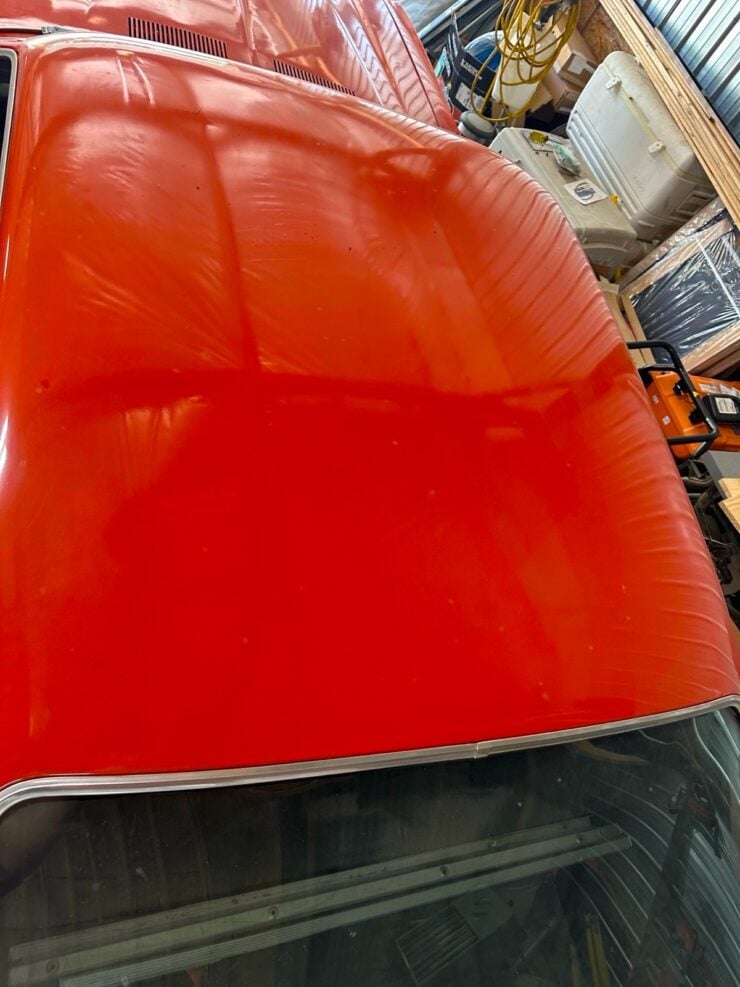This 1976 Plymouth Volare Road Runner is a barn find that has been sitting for at least 15 years, since the motor was pulled for a rebuild. The project stalled soon after this, but the engine remains with the car, and this is the rarer 4-speed manual version.
In 1976 the borderline-mythical Road Runner name was brought back as a trim and graphics package on the Plymouth Volare. Aside from the dress up kit, it also came with a choice of two V8 engines, and higher performance suspension was sourced from the police package.
Fast Facts: The Plymouth Volare Road Runner
- The Plymouth Road Runner was launched in 1968 as a low-cost, high-power muscle car with a 383 V8, 4-speed manual, and stripped-down features. It gained quick popularity, won Motor Trend’s Car of the Year in 1969, and became famous for its drag strip prowess and the NASCAR-dominating Superbird variant.
- A redesigned second generation appeared in 1971 with Chrysler’s curvier “fuselage” styling and continued to offer big-block engines, including the final-year 426 Hemi. Increasing emissions regulations and rising insurance costs steadily eroded performance, and by 1974 the muscle car era was largely over.
- The Road Runner name shifted platforms twice in its final years. First, to the heavier 1975 Fury, and then in 1976 to the compact Volare as a trim and graphics package. The 1976–to 1980 Road Runners featured modest V8 power, police-package suspension, and optional 4-speed manual transmission, but lacked true muscle car performance.
- The example shown is a 1976 Plymouth Volare Road Runner barn find with a 318 V8 and rare 4-speed manual. Parked for over 15 years, its motor was pulled for a rebuild that never happened. The car remains largely intact and is now being sold on eBay out of Burlington, Wisconsin, awaiting restoration.
History Speedrun: The Forgotten “Last Road Runner”
The 1976 – 1980 Volare Road Runner has been called the “Last Road Runner,” as it was the final time the name would adorn an official Plymouth production car. Given the fact that the Plymouth brand was killed off by Chrysler in 2001, it seems unlikely that there will ever be another.
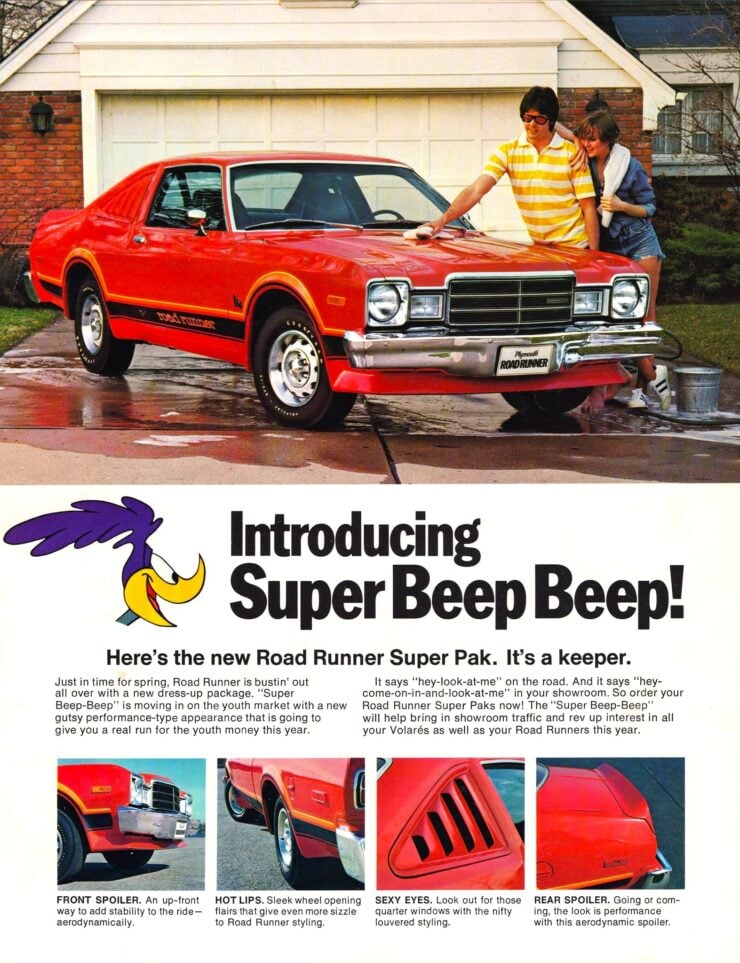

The First Plymouth Road Runner
The first Plymouth Road Runner was introduced in 1968 as a no-frills performance car built on the B-body Belvedere platform. Developed as a response to rising muscle car prices, it prioritized power, performance, and perhaps most importantly, it offered true affordability.
The base model was powered by a 383 cubic inch V8 rated at 335 bhp, this was mated to a 4-speed manual transmission. The car came stripped of amenities, using a front bench seat and minimal trim to keep costs down. Chrysler also paid Warner Bros $50,000 to license the “Road Runner” cartoon character and horn sound – adding a pop culture tie-in that would help the car quickly attain legend status.
Road Runner sales rapidly exceeded expectations, reaching over 44,000 units in its debut year. By 1969, Plymouth offered hardtop and convertible body styles, and added performance options like the 440 Six Barrel and the 426 Hemi V8s. The Hemi version, while more costly, helped to establish the Road Runner’s reputation at the drag strip where few could beat it down the 1/4 mile. That same year, the Road Runner was named Motor Trend Car of the Year.
In 1970, styling updates included a new grille and more aggressive body lines, but the car’s core mechanical layout remained largely unchanged. The 426 Hemi and 440 Six Barrel V8s continued as top-tier engine options. Plymouth also introduced the limited-production Superbird, a NASCAR homologation model with an aero-nosecone and almost comically-high rear wing – both additions designed to help it win in high-speed NASCAR ovals.
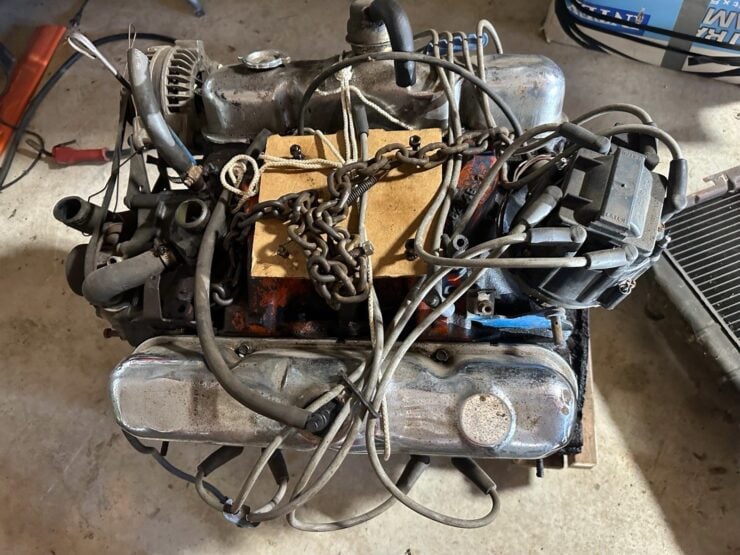


Though divisive in its appearance, it dominated superspeedways and it soon laid the foundations of the Road Runner’s NASCAR legacy. Today it’s widely regarded as one of the most memorable, and undeniably one of the most iconic, competitors of its time.
The Second-Gen Road Runner
The second generation of the Road Runner debuted in 1971 with a complete redesign. The body adopted Chrysler’s “fuselage” styling, which had more pronounced curves and a semi-fastback roofline. Engine choices ranged from a 340 small-block to the returning 383, and optional 440 and 426 Hemi big-blocks.
However, rising insurance premiums, tightening emissions standards, and the use of lower-compression ratios (for emissions purposes) began to diminish the car’s performance. The 426 Hemi saw its final year in 1971. By 1972, SAE net horsepower ratings replaced gross figures, making power numbers appear even lower.
Styling changes continued through 1974, as did engine updates to meet increasingly stringent emissions regulations – sales dropped steadily and the muscle car era faded out by the mid-1970s.
The Third Road Runner
The 1975 Road Runner marked a major shift for the nameplate – it moved to the B-body Fury platform, which was larger and heavier. The car retained some performance cues, like rally wheels and graphics, but its performance credentials had diminished severely from where it had been in the late-1960s.
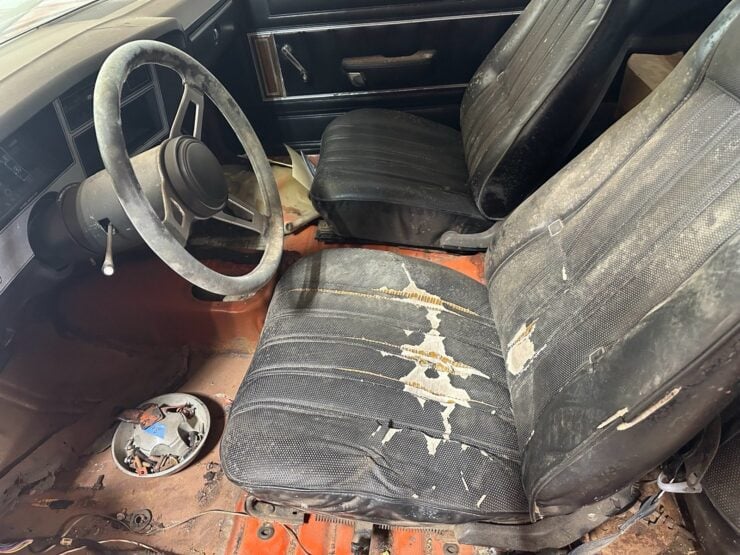


Engines included a 318, 360, 400, and a detuned 440 V8, with the top version producing only 235 bhp – only about 7,300 were sold that year.
The Final Road Runner
In 1976, Plymouth repositioned the Road Runner once again, this time as a trim package on the new compact F-body Volaré. The car received stripes, unique badging, rally wheels, and a stiffer suspension from the police package, but it was otherwise more of a cosmetic option.
Engine choices included a 318 V8 or a 360 V8 with power of up to 195 bhp, depending on emissions equipment. Later versions would also be offered with the 225 “Slant 6” six-cylinder, and for the final year of production, 1980, the 360 V8 would be dropped as an option.
This would be the final use of the Road Runner name on a production vehicle, and it’s largely forgotten today, with the original first generation cars still attracting almost all the attention.
The 1976 Plymouth Volare Road Runner Shown Here
The car you see here is a first-year 1976 Plymouth Volare Road Runner, it was ordered with the 318 V8 engine and unusually it came with the 4-speed manual transmission – the vast majority came with the automatic.
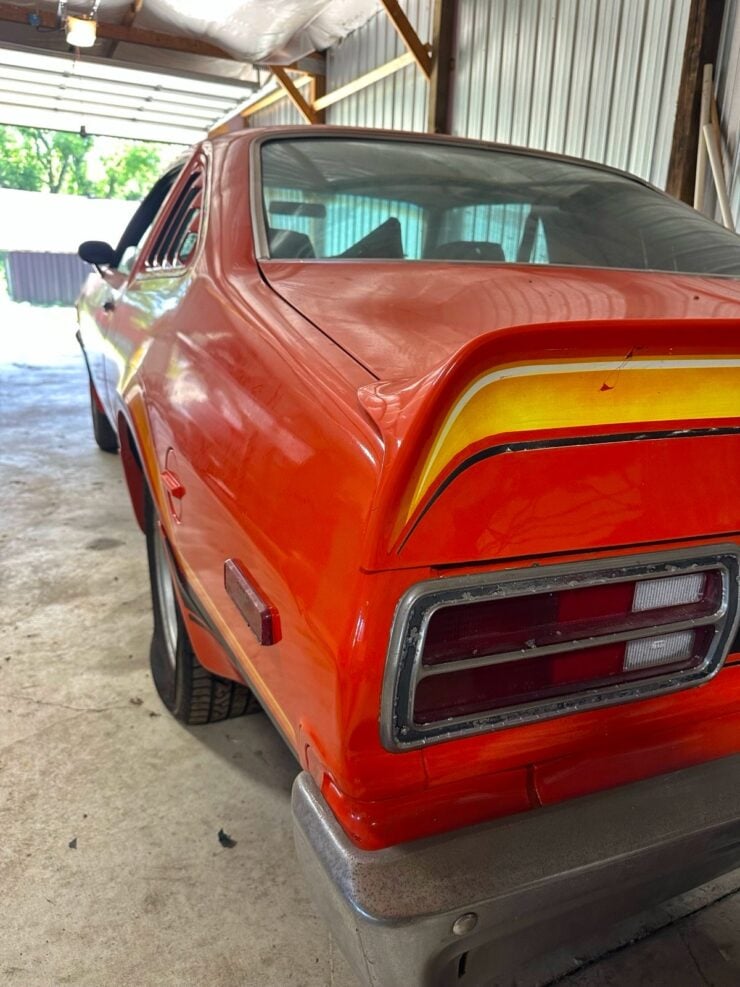


This Volare Road Runner was parked up around 15 years ago, at which point the motor was pulled for a rebuild. The project stalled but the motor remains with the car, and the whole lot is being offered for sale now in the hopes that a new owner will finish the job and get it back on the road.
The car is being sold out of Burlington, Wisconsin on eBay, and bidding is currently underway. If you’d like to read more about it or place a bid you can visit the listing here.
Images courtesy of eBay Seller


